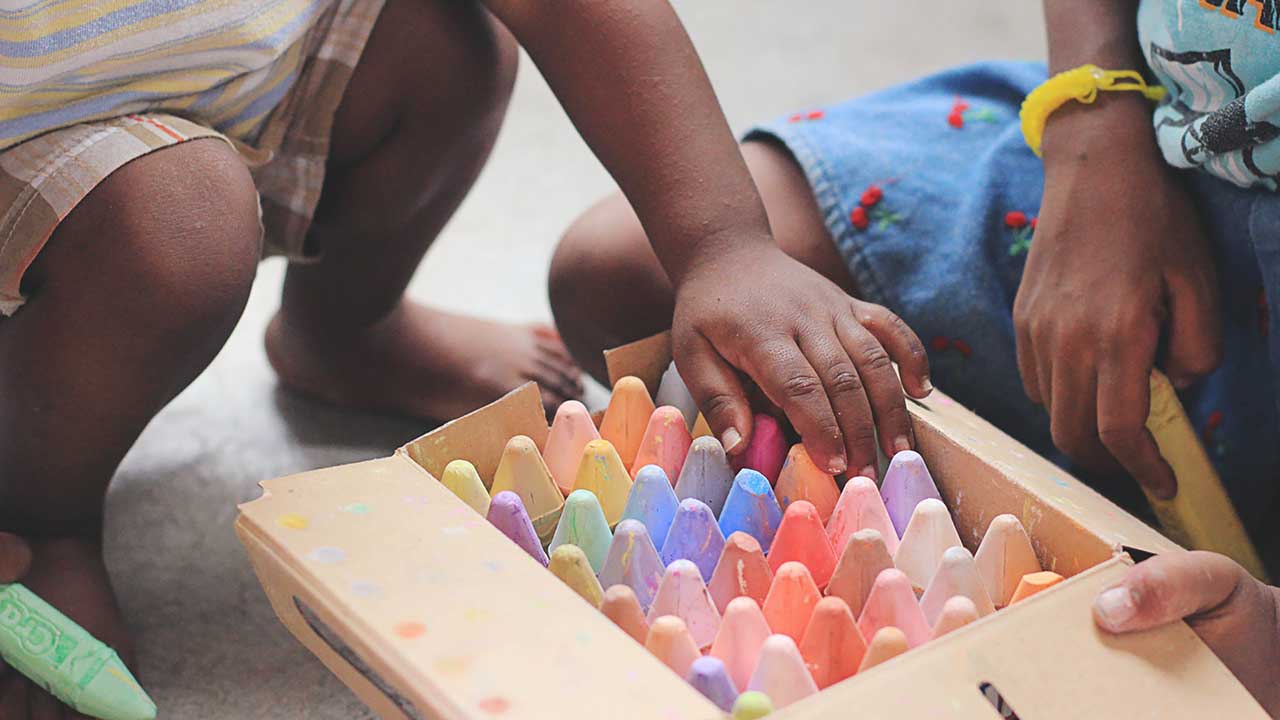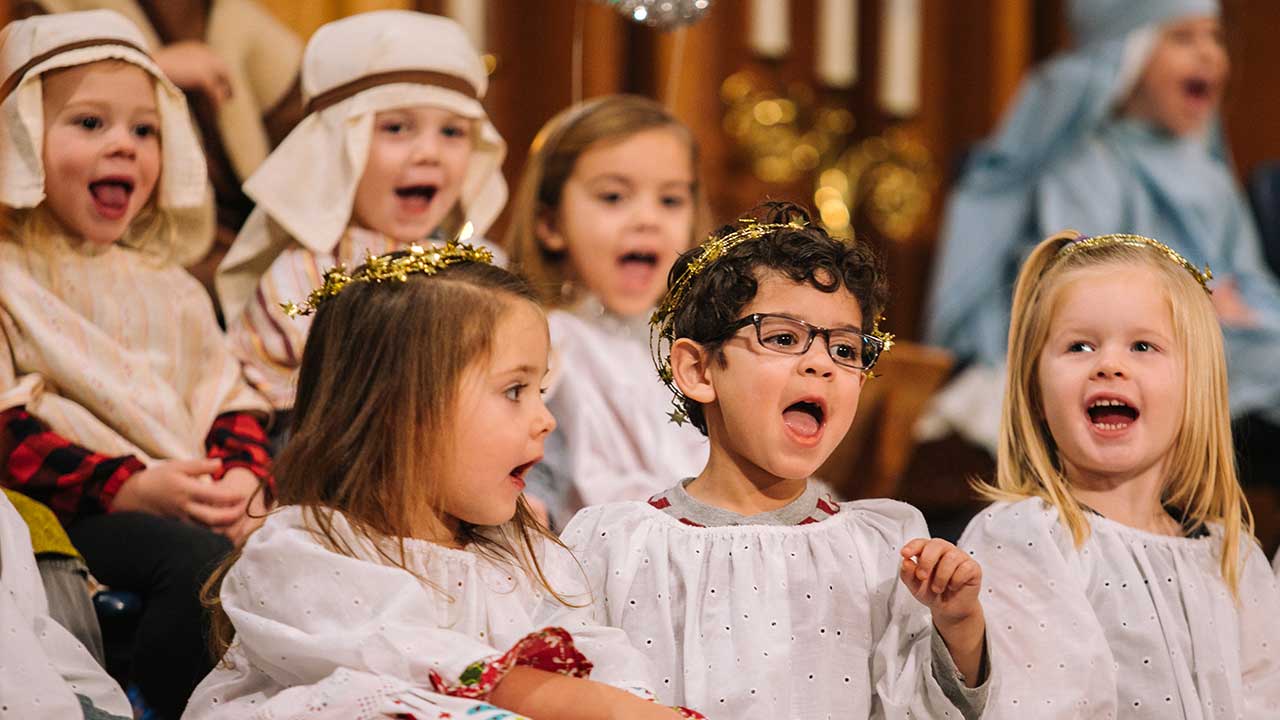
LIMITLESS KIDS - Dani Johnston
How do you enhance learning in children's work?
Dani Johnston shares how you can improve learnability and recollection of memory by stimulating children's senses in your kid's ministry time.
Many of us may look back with fondness to the years when we were young children attending what we used to call 'Sunday School'. I definitely won’t fault the one I attended as my mum was the teacher, worship leader and creative director! I am thankful to her and all she taught us. I remember hearing about all the stories from the Bible, singing songs that related directly to these stories and learning all the books of the Bible in song form too!
As I contemplate, there are a couple of things that stand out. One is that most weeks we had a story, singing and a matching colouring-in sheet to go hand in hand with the theme. The second thing I recollect is that I don’t always remember what the stories meant to me and for me. I have to ask myself, what were the practical applications to help me every day as a young Christian girl in school who experienced bullying for being the 'odd one out' - 'going to church'.

The education and teaching of children have vastly developed since those days, not only in formal education settings but in informal settings like churches and kids clubs too.
We mainly learn what we do from the world around us, taking in information from our five senses, touch, taste, smell, sight and sound. We are more likely to not only learn more information but to also retain more information when we use as many senses as we can in the learning process.
When someone has a visual or hearing impairment, their other senses have to work harder to acquire the same level of information. It is true that if one sense is impaired to any degree, the other senses can be trained to compensate.
This is the same for every child we meet, care for and teach each week in our churches.
Our heart is for every child to be taught, nurtured, pastored and discipled effectively, to cultivate a valuable and active relationship with God, and be transformed by His love for them at the age they are. Ordained leaders of others, in their environmental settings, continuing to grow, making a difference now and in the days ahead.

As Christians, we are called to model God’s kingdom to children in every aspect of faith.
From the tools of how to worship, pray, listen to and actively hear Gods voice speaking to them. To the more spiritual of who is God our father, Son and the Holy Spirit and how to interact with the Trinity in a personal relationship. To the foundations of our faith of the cross, commandments, what the bible is, how to read it and how it helps.
Knowing the stories, songs and having a colouring-in sheet are all well and good, but we know there is much more to understand, learn and teach.

Enhancing learnability through sensory integration
As mentioned earlier, a child is likely to learn and retain more information if they are given the opportunities to use multiple senses in their learning. A basic approach would be a purely creative model, though imperative, “Sensory integration through creativity” offers much more.
For 18 months, I have been leading our kid's ministry. It was a good kid's ministry with leaders who loved the children and were passionate. Imminently multiple sensory learning was introduced, using more than two senses at every aspect of learning. The changes in the kid’s learnability radically improved and increased. The children are more engaged in teaching, worship (not song singing) and prayer (not a repetition of recited prayer) related activities i.e. memory verses, journaling, their Biblical knowledge and group discussions. This model is implemented from 0-11 years.
Though historically it was unacceptable to eat sweets during learning, it was also deemed inappropriate to 'doodle' during lessons. Now it is considered completely acceptable for students to be offered sweets to stimulate learning and help memory recall!
Why? Because they are enhancing learnability and recollection of memory by stimulating additional senses by sucking on a sweet - taste, smell, touch.

How do we use more than one or two senses when teaching children?
A simple way to do this is to take the topic, theme and story apart and re-build it with the five senses in mind. Being creative at every single step as you re-build your session plan and program.
Example: A few months ago I taught the 0-2’s about Moses and Aaron in the desert and I taught the story through the using “playmobile characters” walking in sand, using a sandpit [visual]. The children all had time to play with “Moses and Aaron” in the sandpit and were able to feel the sand [touch] and talk about how it would have felt on their feet [touch]. The children were given manna to try and we spoke how it tasted and felt in their mouth [taste/smell]. Following our story, we flowed through to the memory verse using singing, simple actions and matching pictures for the children to hear it, sing it, see it and playact it.
If we take the five senses and apply at least three to each area in worship, word, witness and warfare, we will begin to see a greater level of engagement, and a deeper understanding from children. Children learn in unique ways and by adopting this model we will meet the needs of many kids in our care. A greater level of learnability and life change will be experienced as our kids grow and we see their relationship with God develop.

Creative ideas to enhance learning
Here are some of my top resource tools/ideas used in kids ministry sessions I lead.
-
Bubble machine – used for worship/prayer
-
Visual backdrops and lyrics for worship
-
Flags, ribbons etc
-
Light up globes (prayer)
-
Small tents/large gazeebo
-
Themed stage props/ room themed banners
-
Prophetic art sessions
-
Prayer/activation stations
-
Atmospheric lighting – ceiling lighting, stage lights
-
Always use food as a prop if feasible! Make sure allergies are known and accounted for. Water, sand and slime are also superb.
Enjoy this article? Don't forget to share